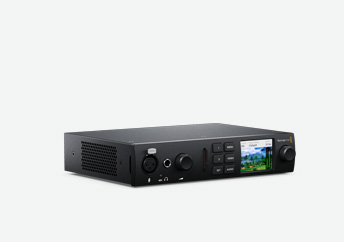

The compact form allows for the acquisition of analog video as component, while digital signals come in via 12G SDI or HDMI 2.0. Whether conforming deliverables for SD, working in mainstream 1080 for broadcast, or finishing a project in 4K Rec2020 PQ as required for HDR deliverables, the UltraStudio 4K Mini performed beyond all my expectations.Īt roughly 8” x 7” x 2”, it’s technically only ‘mini” as compared to the full-size UltraStudio. Small enough to fit on a DIT cart onset, yet more than powerful enough to handle the growing demands for 4K and HDR deliverables in post, it’s going to work regardless of which tools you choose. The Front panel of the UltraStudio 4K Mini has an XLR mic input, headphone jack and volume control, SD card reader, control and selection buttons and a confidence monitor with either VU or PPM audio monitoring.

With the release of the UltraStudio 4K Mini, Blackmagic has reaffirmed itself as the leader in production and post-production I/O. What I received was not what I thought I was looking for, but ended up being way, way more. That’s why when the UltraStudio 4K Mini was first announced, I reached out to my friends at Blackmagic Design to get a closer look. Previously, I used the combination of BMD’s UltraStudio Mini Recorder and the UltraStudio Mini Monitor to handle the acquisition and playback in the world of SDI and HDMI connectivity onset, but I was always forced to connect them at the end of my Thunderbolt device chain was more than a bit awkward when working onset. I have been patiently waiting for an affordable Thunderbolt 3 device that could handle the wide range of needs I require for I/O in production and post.


 0 kommentar(er)
0 kommentar(er)
